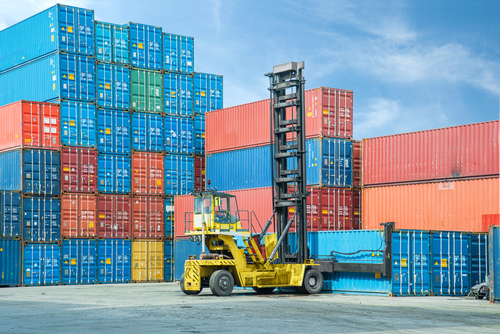Parts and labor shortages are crimping production at truck-trailer factories, undermining trucking companies’ efforts to expand capacity in a constrained freight transport market.
According to transportation data provider ACT Research, manufacturers produced 25% more dry vans—the most common type of semitrailer used to haul goods—in 2019 than they do now, and industry turnaround times for orders now stretch as long as eight months after peaking at 13 months earlier this year.
Wabash National Corp. of Lafayette, Ind., expects to produce about 25% fewer trailers this year than it did before the pandemic due to shortages of everything from foam insulation to suspension components and taillight wiring.
According to Chief Financial Officer Mike Pettit, demand is the highest it has ever been in the company’s history. According to a Wednesday investor presentation, Wabash’s backlog of orders for trailers and other products had risen to more than $2.3 billion as of Nov. 30. The company is passing on higher material costs to its customers, such as steel, which, according to Mr. Pettit, quadrupled in price between a low point in August 2020 and the third quarter of 2021.
Factory backlogs are causing a drop in trailer orders in the United States, as transportation equipment manufacturers keep a lid on sales because their production slots are fully booked through 2022. According to ACT, the number of October orders fell by about 69 percent compared to the same month in 2020, when trucking companies were racing to expand capacity as the U.S. economy emerged from pandemic lockdowns. In October, trucking fleets ordered approximately 17,400 trailers from US manufacturers, a decrease of more than 38% from September.
“It’s not because fleets don’t want to buy trailers or place orders,” ACT’s director of commercial vehicle transportation analysis and research, Frank Maly, explained. “It’s because the manufacturers are very hesitant to accept additional orders at this point.”
Mr. Pettit of Wabash stated that the company is “being selective” and prioritizing its top customers. “The market dynamics are such that every manufacturer, Wabash included, must turn down orders,” he wrote in an emailed statement.
According to Don Ake, vice president of commercial vehicles at freight industry research firm FTR, a lack of new trailers is slowing the flow of goods and contributing to higher trucking rates for retailers and other shippers. Many older trailers are also idle, according to Mr. Ake, due to a lack of replacement parts.
The backlog at Felling Trailers Inc. in Sauk Centre, Minn., is “four times the size it’s ever been prior to 2021,” according to Pat Jennissen, the company’s vice president of sales and marketing. The manufacturer of flatbed trailers briefly halted production in July due to delayed materials and is now stockpiling twice as much inventory as it normally would, stockpiling items such as tires to guard against future shortages.
Despite efforts to attract workers by raising pay and benefits, Bob Wahlin, CEO of Stoughton Trailers LLC, said labor shortages are limiting output for the Stoughton, Wis.-based company and its suppliers.
“It appears that nobody is producing as much as they would like right now,” Mr. Wahlin said. “They just can’t seem to get enough people.”
Backlogs, according to equipment manufacturers, are frustrating customers attempting to refurbish their fleets. The trailer shortage occurs as a result of shortages of semiconductors and other parts, which are limiting heavy-duty truck production.
Werner Enterprises Inc., based in Omaha, Nebraska, received fewer trucks and trailers than expected in the third quarter as component shortages limited manufacturers’ ability to meet demand, executives said on an earnings call on Oct. 28.
During the call, Werner Chief Executive Derek Leathers stated that manufacturers “are increasingly challenged to meet current demand levels due to shortages of semiconductor chips, raw materials, component parts, and labor.” “We anticipate that this industry trend will continue into 2022.”














